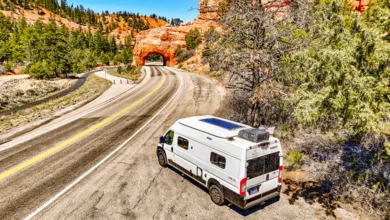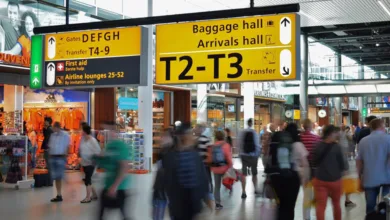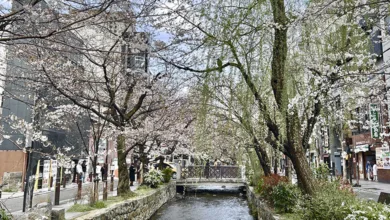
Welcome to the new world of blended travel.
Remote work now allows many employees to work from anywhere. Businesses learned this valuable lesson during the pandemic, and workers continue to take full advantage of teleworking.
But now we’re seeing a rise in this transformational trend.
What is Blended Travel?
Blended travel refers to trips that include work and leisure time, whether adding extra vacation days to a business trip or working remotely during a vacation.
This trend certainly isn’t a recent phenomenon, given that business and leisure have always had togetherness.
Consider you’re attending a convention in Las Vegas, and you decide to tack on an extra day to see a good show or try a brand-new famous chef’s restaurant. Blended travel!

Our family took advantage of this option often when my husband (a retired Navy captain) was stationed in Italy with NATO. The family could go along for the drive, pay for our own flights, and stay in the same hotel with my husband on work-related travel — a nice perk.
Travel Surveys Support the Growing Trend
According to the U.S. travel insurance marketplace Squaremouth, over 43 percent of its surveyed travelers revealed they’ve taken a blended trip in some form and will continue to do so in the future.
However, statistics show that workers who lean toward blended travel are 35 years or older with a higher annual household income, an advanced degree, and usually have a partner and children. They also tend to have more seniority on the job.
A published report, “The Future of Blended Travel,” from Crowne Plaza Hotels & Resorts, part of IHG Hotels & Resorts, revealed an increase in guests blending work travel with leisure as more travelers in the U.S. desire greater flexibility in their workdays and their work trips.
Sixty-six percent of U.S. travelers agree that remote working has provided more significant travel opportunities. A work environment surrounded by nature (think mountains, forests, or oceans) inspires a better work product.

So, what’s driving this trend that has boomed over the past two years?
Eighty percent of Americans show interest in adding a few extra days to their future business trips to indulge in leisure activities. Thirty-six percent agree that the possibility of adding two to three leisure days on to a work trip would encourage them to travel more (especially during summer months when the kids and grandkids are out of school).
Family significantly impacts blended travel, as almost 40% of travelers say they mainly travel to reconnect with friends and family.
The trend is now shifting from a mentality that puts work over anything else to one in which a healthy balance between work and leisure is desirable.
For companies, blended travel can save on travel costs. For example, adding a few extra days to a trip makes the airfare cheaper. In addition, employers and corporations are more concerned about performance than micro-managing their employee’s out-of-office time. After all, a happy employee is a productive one.

Is There a Downside to Blended Travel?
We’ve talked about the pros of blended travel, but it’s also essential to understand the cost, as several factors are at play here.
While companies understand the need to provide their valued workers more flexibility and see blended travel as a perk to bring on and retain talent, it’s a challenge for many to define a solid travel policy.
As for the blended traveler, finding a balance is crucial, whether self-employed or working for someone else. Leisure time restores the soul, but the reason for the travel is still imperative.
Like anything in life, execution makes all the difference. For blended travel to work, the employee and employer must set boundaries and communicate to maintain the perfect balance, making it a win-win and more than a passing trend.





